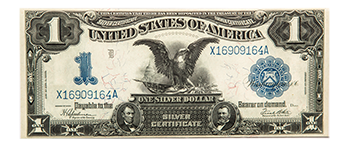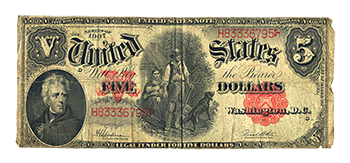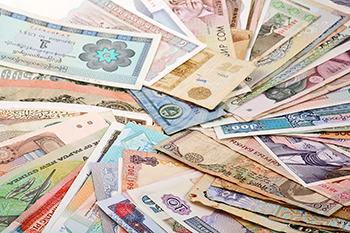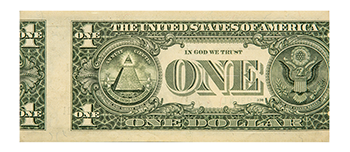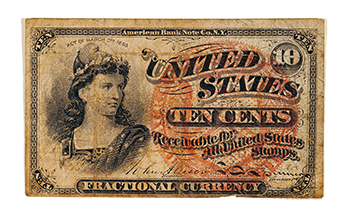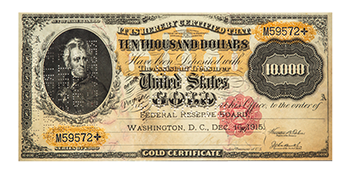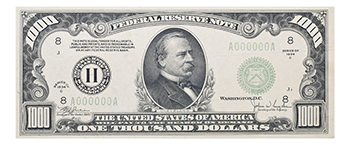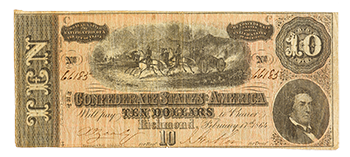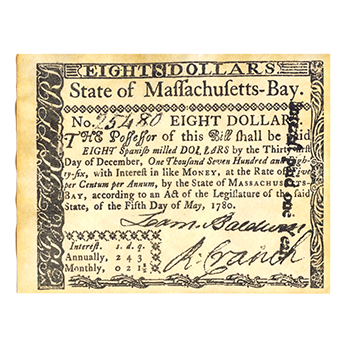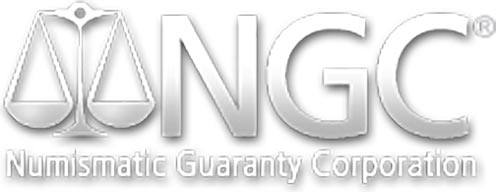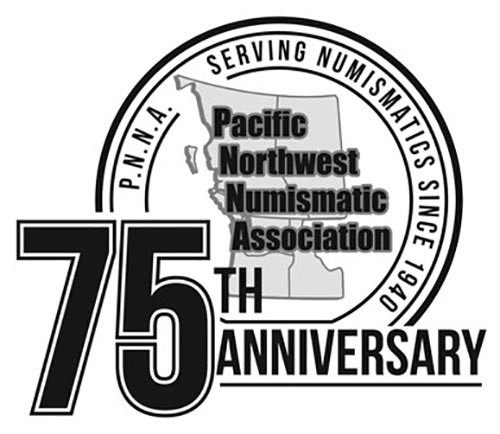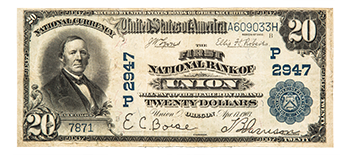
To generate capital during the Civil War, more than 12,000 banks across the country and in U.S. territories started issuing their own money. Know as National Bank Notes, the currency was printed and backed by the federal government. Each note had the issuing bank’s national charter number and serial number. It also prominently bore the name of the local bank. So we commonly see notes with familiar local names. It’s why these are sometimes referred to as “Hometown Notes.” Many of them were mass-produced, and therefore not worth much money to collectors. However, some are quite rare and have sold for over six figures.
National Bank Notes were retired in 1935, replace in large part by Federal Reserve Notes.

